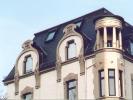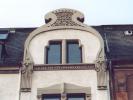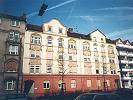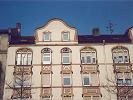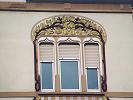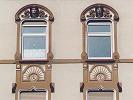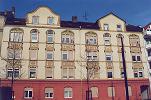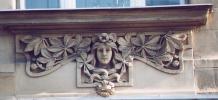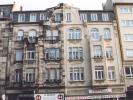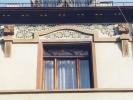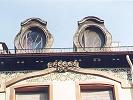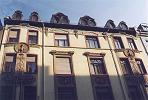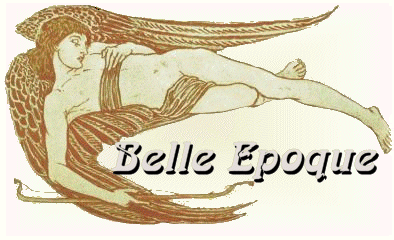The Belle Epoque in Europe
Germany
Hessen: Offenbach
When having a walk through the districts nearby the centre of Offenbach, one can see that still today there is quite a lot of ancient houses built by the middle class at the end of the XIXth century in a rather small area although during several periods many efforts of destruction and modernisation have been made and in spite of two world wars (following the official records, "only" 36 percent of Offenbach have been destroyed).
Goethestraße 59 (1906/07)
During the Belle Epoque, the percentage of inhabitants pertaining to the middle and upper class was relatively high. The economic upswing in Germany following the German victory over France in the war of 1870/71 and the foundation of the Second Empire was particularly strong in this young industrial town where therefore many people had enough money to build such houses.
Wilhelm Herber: Berliner Straße 239/241 (1903)
Until the XIXth century, goods and buildings were handmade, i. e. in manufactories and by craftsmen so that only the aristocracy and upper class were able to pay them. Subsequently to the industrialisation, factories and plants were built where many workers now produced for the masses instead of the individuals. The increasing competition caused not only lower prices but also a better quality of the products.

Kaiserstr. 97
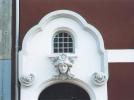
Kaiserstr. 97

Kaiserstr. 97

Kaiserstr. 97

Kaiserstr. 117
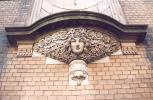
Goethestr. 20
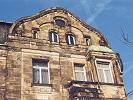
Max Schroeder
Bismarckstr.
123 (1904-06)

Kaiserstr. 88
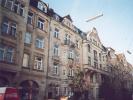
Ludwigstr. 72-78
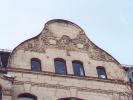
Ludwigstr. 76

Ludwigstr. 70

Ludwigstr. 81

Ludwigstr. 81

Ludwigstr. 81
Around the turn of the century, first tendencies towards saturation could be observed. It was necessary to find a new style,
new forms in order to stimulate the rich bourgeoisie to buy more products and to promote the industrial production of low price
products for the middle and the working class. Very quickly each kind of goods of the Art Nouveau style were produced, and the
new style rapidly became famous at the same time in Vienna, Paris, Brussels, or Glasgow.
In Germany, the popularity of the Art Nouveau was above all due to magazines such as Die Jugend (The Youth) from Munich
(from which the Art Nouveau got its German name Jugendstil (style of The Youth) or German Art and Decoration edited
by Alexander Koch in Darmstadt.
Kaiserstraße 65
Moreover, the Craftsmen Society of the federal state of Hesse and the arts and crafts school in Offenbach kept a good cooperation with the Arts and Crafts Centre in Darmstadt, one of the Art Nouveau strongholds of Germany. There were held conferences and expositions for the regional artists.
Karl Steuerwald: Luisenstraße 5 (1902/03)
The manufacturer Klingspor from Offenbach was one of the first factory owners in Hesse who commissioned works to the members of the Artists' Colony Mathildenhöhe in Darmstadt. One of the first private commissions to the Darmstadt artists was the staircase from Patriz Huber in the building Tulpenhofstraße 52, one of the last interior ensembles in the early Darmstadt style which still exists whereas in Darmstadt similar works have been destroyed during the Second World War.
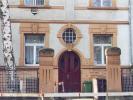
Hohe Str. 5
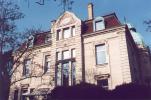
Gebr. Hasenbach
Schillstr. 1
(1905/06)

Gebr. Hasenbach
Schillstr. 1
(1905/06)

Gebr. Hasenbach
Schillstr. 1
(1905/06)
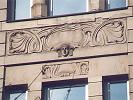
Gebr. Hasenbach
Schillstr. 1
(1905/06)

Frankfurter Str. 66
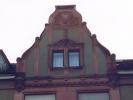
Frankfurter Str. 66

Frankfurter Str. 66

Tulpenhofstr. 31
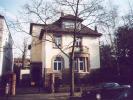
Tulpenhofstr. 31
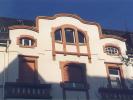
Geishornstr. 11

Buchrainweg 17

Buchrainweg 6

Buchrainweg 4
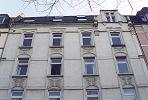
Buchrainweg 4
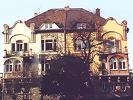
H. u. L. Nagel
Buchrainweg 27
(1902/03)
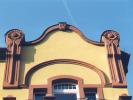
H. u. L. Nagel
Buchrainweg 27
(1902/03)

H. u. L. Nagel
Buchrainweg 27
(1902/03)

H. u. L. Nagel
Buchrainweg 27
(1902/03)
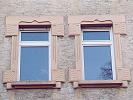
Buchrainweg 24

Buchrainweg 12

Buchrainweg 12

Isenburgring 12/14
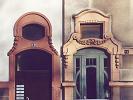
Isenburgring 12/14

